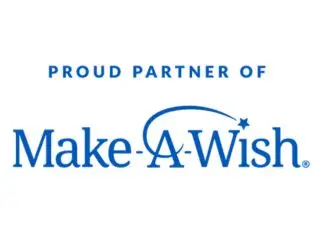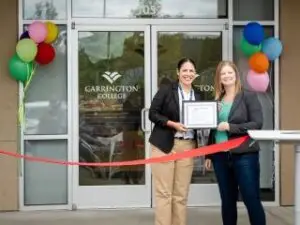French researcher Albert Calmette and veterinarian Jean-Marie Camille Guérin accomplished to attenuate the bacterium causing tuberculosis. After extensive mosquito control, North America saw its last yellow fever in 1905 in New Orleans. In 1906, the bacteria responsible for whooping cough were isolated. In 1909, the air-dried vaccine for smallpox was developed in Paris. After years of experimentation, an effective mixture between diphtheria toxin and antitoxin was developed by William H. Park and started to be used as immunization in 1914. The antibodies of measles were finally identified in 1916 by French researchers Charles Nicolle and Ernest Conseil.
In 1918, the Vaccine Institute in Pairs developed freeze-dried vacuum smallpox vaccines that were to be used in the tropical French colonies. Smallpox vaccinations became mandatory for schoolchildren across the United States in the early 1920s. Veterinarian Gaston Ramon and physician Alexander Thomas Glenny independently developed diphtheria toxoid in 1923. In 1929, the Iron Lung, an artificial respirator for patients with paralytic polio, was first successfully used in Boston. Two years later, American researcher Margaret Pittman classified different types of Haemophilus influenzae bacteria and found that the type b strain caused nearly all cases of Haemophilus influenzae meningitis. In 1936, Max Theiler and his colleagues developed a live attenuated vaccine for yellow fever using tissue cultures prepared from embryonated chicken eggs. American bacteriologist Pearl Kendrick and her colleague Grace Elderding published an article about the effectiveness of the pertussis (whooping cough) vaccine in 1939. Australian ophthalmologist Norman McAlister Gregg linked rubella during pregnancy to congenital cataracts. His observation was the first of what eventually became a collection of reports linking rubella during pregnancy to various congenital defects. After a hepatitis outbreak in the early 1940s among U.S. Army troops, human plasma was completely removed from the yellow fever vaccine. World War II also lead to massive diphtheria outbreaks in Europe: in 1943, there were 1 million cases and 50,000 deaths. In 1944, Maurice Hilleman helped develop a Japanese encephalitis vaccine to protect American troops in the Pacific. The first influenza vaccine was approved for military use in the United States in 1945 and civilian use in 1946. Around the same time, the pneumococcal vaccine was developed, but largely ignored due to the widespread use of penicillin against pneumococcal infections. After a merchant travelling from Mexico fell ill with smallpox in New York and thus brought the disease back, the city launched a massive vaccination effort in 1947.
From 1957-1958, about 2 million people died from Asian flu
The first combined DTP (diphtheria, tetanus, and pertussis) vaccines became available in the United States in 1948. The next year, David Bodian and Isabel Morgan, researchers at Johns Hopkins University School of Medicine, published a paper identifying three types of poliovirus, which would become crucial for developing a vaccine, as a vaccine would have to produce immunity to all poliovirus types. The same year, John Enders, Thomas Weller and Frederick Robbins showed that they could grow polioviruses in human embryonic skin and muscle tissue, making the production of the vaccine less difficult and expensive. The early 1950s saw a surge in polio infections, stimulating research to develop a vaccine against the disease. Researcher Jonas Salk and his team accomplished to cultivate the poliovirus in monkey kidney tissue, which would later allow to produce the virus in large quantities for a vaccine. In 1953, physician Thomas Weller was the first to isolate the varicella virus which is responsible for chickenpox. Physician Thomas Peebles isolates the virus responsible for measles in 1954. The same year, the Vaccine Advisory Committee approved a field test of Salk’s polio vaccine; million children participated in the trial. The vaccine turned out to be was 80-90% effective against paralytic polio and the U.S. government licensed Salk’s vaccine immediately. The polio vaccine production was suspended for a month after the “Cutter Incident” (faulty manufacturing methods in several vaccine-producing facilities led to deaths and paralysis). In 1957, Maurice Hilleman and his colleagues identified a new influenza virus that caused the Asian influenza pandemic. They jump-started vaccine production. Worldwide, from 1957-1958, about 2 million people died from Asian flu, with about 70,000 deaths in the United States. Some predicted that the U.S. death toll would have reached 1 million without the vaccine that Hilleman called for. In 1959, the Soviet Union began trials with an oral polio vaccine developed by Albert Sabin. A year later, Merck researchers, under Maurice Hilleman’s direction, detected a simian virus in the monkey kidney cells used to grow poliovirus for Merck’s polio vaccine. As the virus caused tumors in hamsters, the Salk-type polio vaccine production was halted (though no link between the virus and human cancer could be found). Today, all polio vaccines are screened for viruses. In 1960, Sabin’s oral polio vaccine was licensed in the United States. In 1962, Maurice Hilleman and colleagues developed an attenuated measles vaccine, which was licensed the following year. The early 1960s saw a large number of rubella infections in the United States, while the country also started massive anti-mosquito measures. Hillman and his colleagues also began testing a mumps vaccine on the mid-1960s. In 1965, the bifurcated needle was developed to administer smallpox vaccinations more effectively. In 1968, Hillman’s team developed a new attenuated measles vaccine. His rubella vaccine was licensed in 1969. In 1971, the measles, mumps and rubella vaccine became licensed. The same year, a new inactivated rabies vaccine was developed. In addition, the U.S. government licensed Merck’s measles, mumps, and rubella combination vaccine (MMR vaccine). In 1974, many childhood diseases had almost disappeared from developed countries. These diseases, however, continued to take many lives in poorer countries, so the WHO kept promoting diphtheria, polio, tuberculosis, pertussis, measles, and tetanus vaccinations. The swine flu vaccine was developed in 1976, after a swine flu outbreak in New Jersey. The next year, a multi-serotype pneumococcal vaccine was licensed after an Austrian report had shown that pneumonia had caused hundreds of fatalities within a 10-year span despite antibiotic treatment. The World Health Assembly accepted the WHO Global Commission’s recommendation and declared the world free from smallpox in 1980. The following year, the FDA licensed Hilleman’s human-blood-derived hepatitis B vaccine, Heptavax-B. It was the first subunit viral vaccine developed in the United States. While the vaccine proved effective at preventing hepatitis B, concerns about HIV infections gave way to a product in 1986 that did not use human serum. 1981 was also the year the attenuated chickenpox vaccine was licensed in the United States. The first vaccine against Haemophilus influenzae type b (Hib) disease was licensed in the United States in 1985. Two years later, a conjugated Hib vaccine was licensed. First developed in 1975, the Ty21a oral typhoid vaccine was licensed for use in the United States 1989. Low vaccination rates in the late 1980s caused severe measles outbreaks across the country, especially in Philadelphia where 1,500 children died.
Low vaccination rates in the late 1980s caused severe measles outbreaks across the country, especially in Philadelphia where 1,500 children died
In 1994, the Pan American Health Organization reported that three years had passed since the last case of wild polio in the Americas. The FDA licensed Maurice Hilleman’s hepatitis A vaccine in 1995. 2000 marked the year endemic measles was eliminated from the United States (though U.S. residents remained at risk for infection from imported cases). Sanofi’s quadrivalent meningococcal polysaccharide-protein conjugate vaccine was licensed in the United States in January 2005. In 2006, the Advisory Committee on Immunization Practices (ACIP) recommended infant immunization for hepatitis A and rotavirus of all children. Decreased vaccination rates caused increased outbreaks of measles and pertussis (whooping cough) in the United States in the late 2000s. Cholera emerged in Haiti in the aftermath of January 12, 2010, earthquake there.
Sources:
http://www.cdc.gov/vaccines/hcp/patient-ed/conversations/downloads/vacsafe-understand-color-office.pdf
http://www.historyofvaccines.org/content/how-vaccines-work
https://www.iavi.org/How-To-Help/Learn/How-Vaccines-Work/Pages/default.aspx
http://www.who.int/topics/vaccines/en/
http://www.historyofvaccines.org/content/herd-immunity-0
http://www.immunize.org/timeline/
http://www.historyofvaccines.org/content/timelines/all



